
Delivery route planning combines route optimization software with capacitated vehicle routing to deliver optimal, low-cost delivery routes for entire fleets.
Let's explore the difference between route optimization software and a delivery planning solution for companies operating real-world fleets.
Standalone Route Optimization Software
Route optimization software takes an unordered set of locations and tries to find the optimal, ordered route for a vehicle to follow in order to significantly lower costs (i.e. lower fuel, lower labor, less wear and tear, lower insurance, etc).
A typical route optimization problem might look like this.
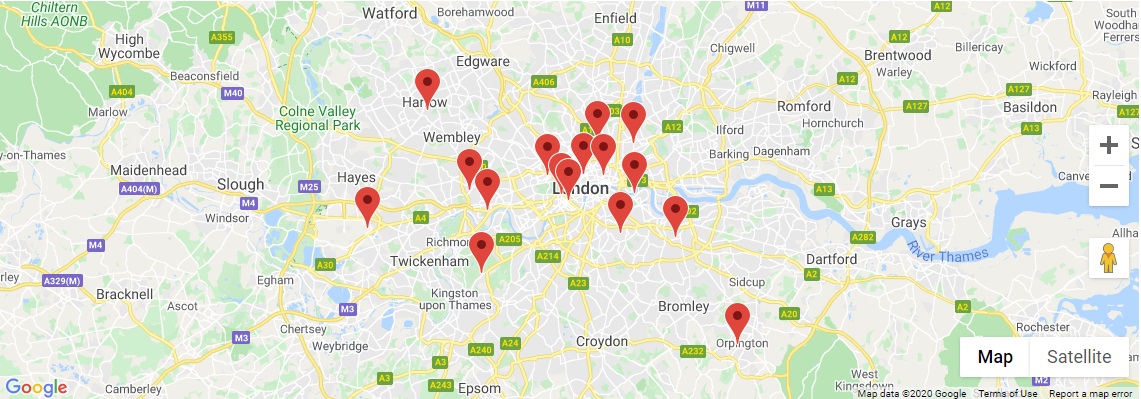
Route optimization software will take those locations and convert them into a sensible looking route, like this.
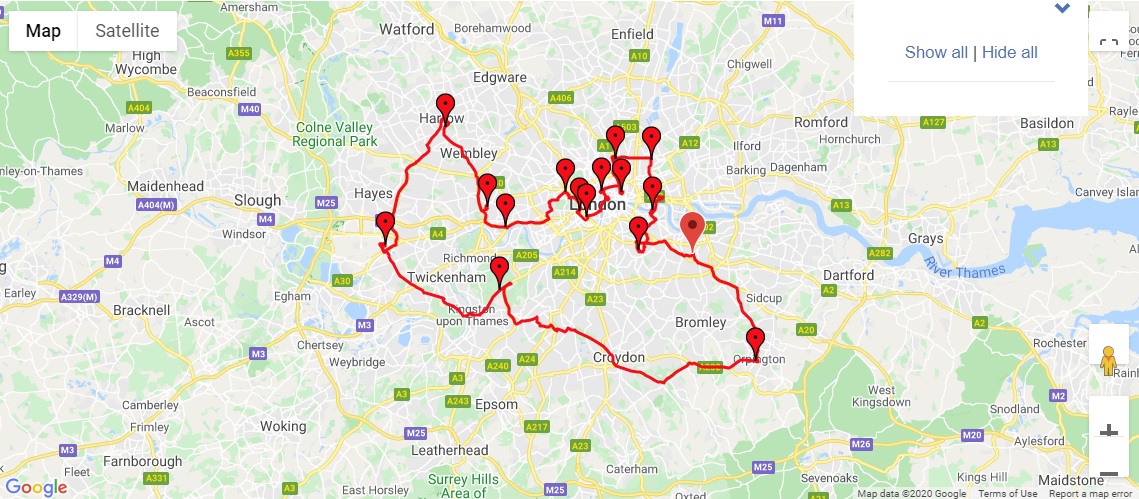
Optimized routes are incredibly useful. In some cases companies have reported savings of in excess of 50% of their delivery costs.
But route optimizations are insufficient, by themselves, for modern logistics and delivery companies.
Furthermore, route planning for single vehicles is also not really that helpful because even very small companies with small fleets still need to ensure the overall costs of their deliveries are minimized - not just the costs of each vehicle in isolation.
Vehicle Routing Software
Vehicle routing for fleets allows for more accurate real-world delivery planning. It can take an unordered set of delivery locations (as shown previously) and turn them into a series of optimized routes for the entire fleet.
Each vehicle is routed to optimize the overall cost of the fleet - even if one (or two) vehicles have to take on more (or less) deliveries than a human planner might assign.
A multiple vehicle route optimization with the same set of locations (but more stringent time constraints - i.e. they need to complete their deliveries much faster than the single vehicle route optimization) looks like this.
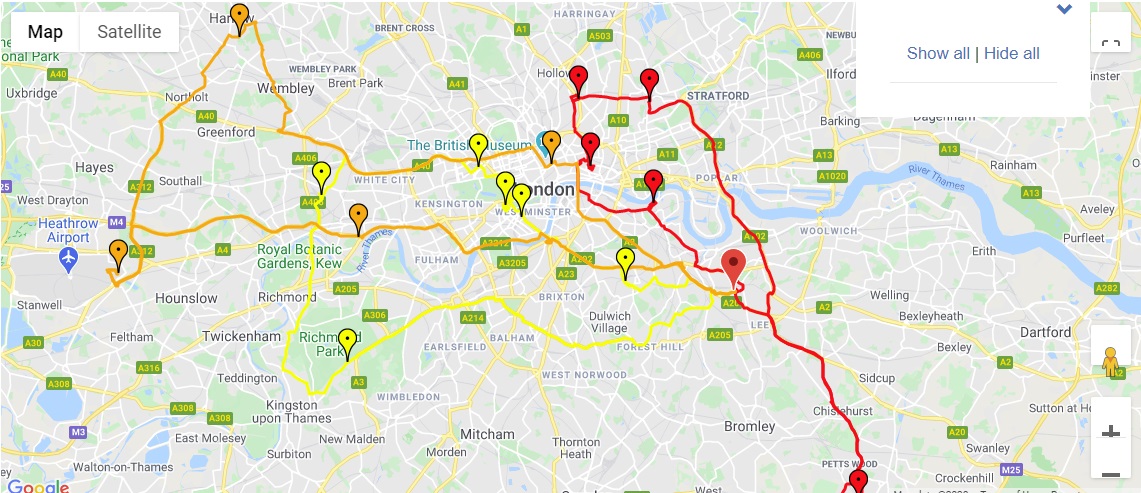
Straight away you might notice that this solution no longer looks like a set of nice, neat distinct routes. Instead there is some overlap between the routes vehicles take. The reason is because the vehicle only have 3.5 hours to complete their deliveries and the only way to accomplish this is to help each other out.
Why is this important?
It doesn't make sense to send a single vehicle off to fulfil the entire company's deliveries on a single day. The driver will become exhausted. Other drivers won't have work. Deliveries will end up being made in the middle of the night. And so on.
Delivery Planning Software
Delivery planning is not only about optimized routes. It's about vehicle routing for fleets in the real world.
If adhering to a delivery schedule is a vital component of delivery planning, then ensuring vehicles are only assigned to carry a realistic capacity is just as important.
Again, there is absolutely no point in having an optimized route if it requires a one-ton vehicle to carry 16 tons of goods at one time.
We can adapt the previous problem by adding delivery capacity requirements as follows.
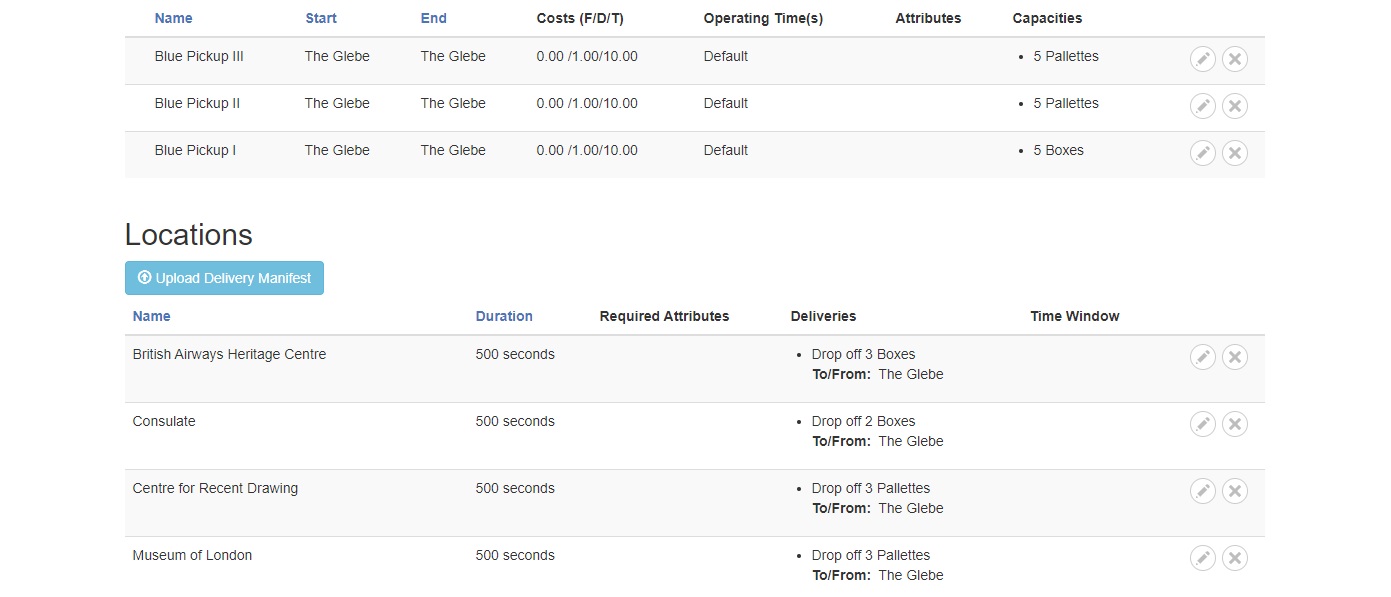
In this case, two vehicles have been provisioned to carry Pallettes and one vehicle can carry Boxes. Obviously these could be adapted to fit any real-world delivery requirements.
Take note of the fact that two locations require deliveries of Boxes so these locations must be visited by the vehicle able to carry that capacity type. In addition, there are a total of 6 Pallettes to be delivered. Each vehicle only has a carrying capacity of 3 Pallettes so no one vehicle can make both deliveries in a single trip.
The optimal delivery plan looks like this.
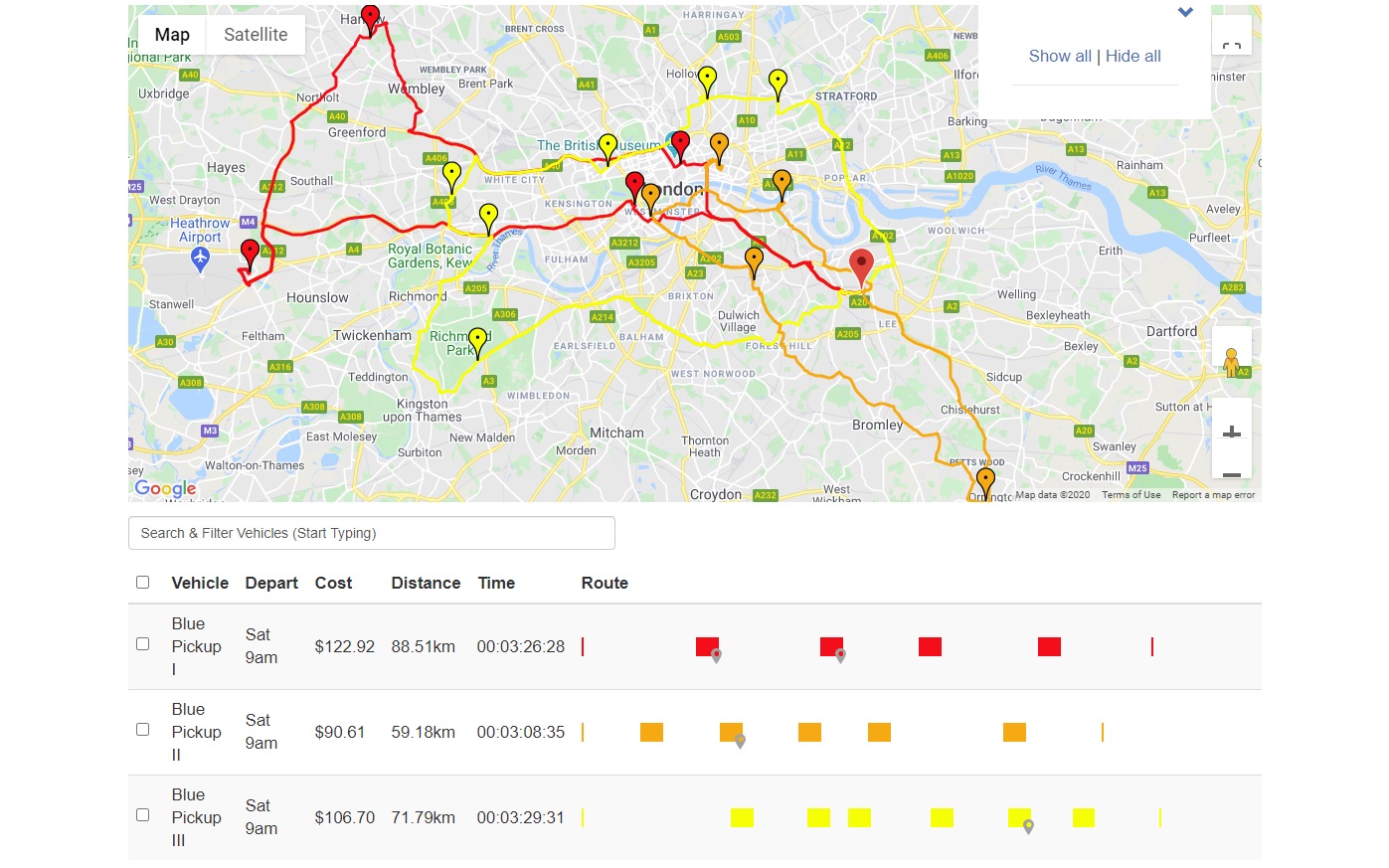
Note, in particular, the previous optimal delivery plan that did not take into account delivery capacities has been completely changed in order to cater for the new requirements. In particular, Pickup I dropped off two Boxes deliveries (denoted by the small gray pinpoints in the vehicle's linear timeline below the map), while the other two vehicles each delivered 3 Pallettes (staying within their real-world carrying capacity limitations).
Delivery planning software must be both route optimization software and a vehicle routing platform that obeys real-world business limitations in order to generate solutions that don't only look good and save money, but also save money in a realistically achievable way.
